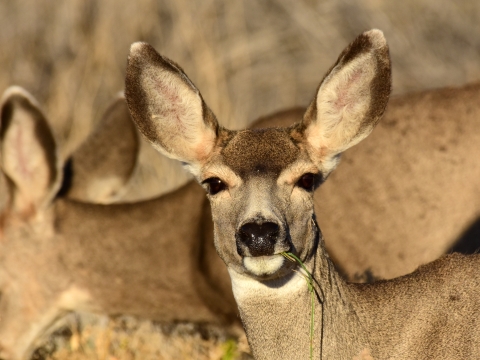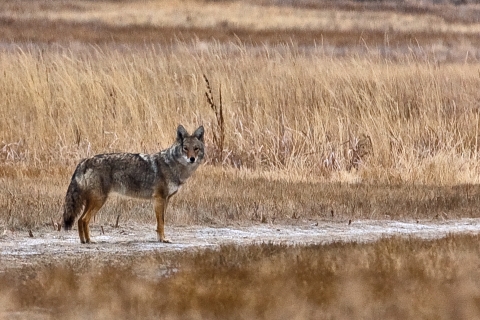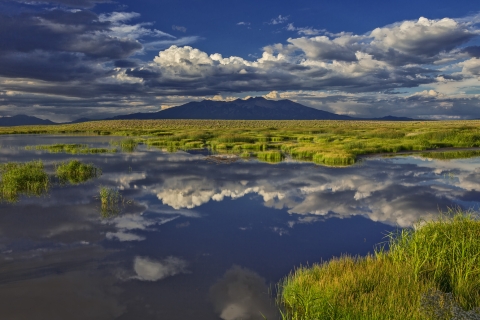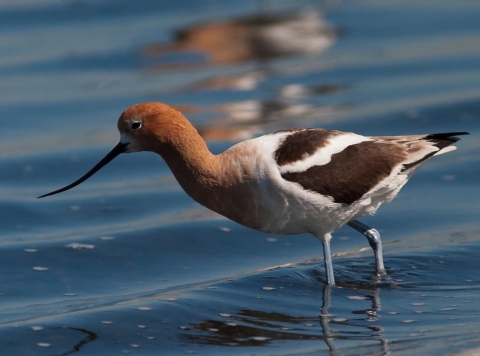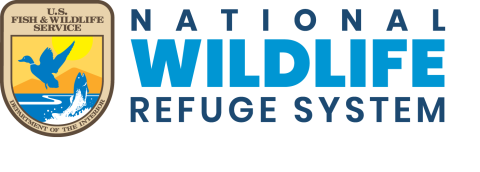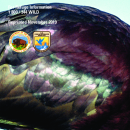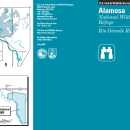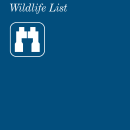Visit Us
Wildlife Viewing & Events (9/25/2025)
* Public Viewing Areas
* “Wildlife Drive” located east of the Comfort Station & Kiosk is partially wet with some waterfowl use in the southern and eastern portions of the unit. Mule deer and Elk have also been seen hanging out along the fringes of the wetland.
* “Rio Grande Walking Trail” located at the Visitor Center is open from Sept 1st – April 15th. Currently the trail is open and hosting a good number of migrating songbirds and waterfowl. Other birds such as Great Blue Herons, Swainson’s Hawks, and American Kestrels are very frequent in this area. A few Sandhill Cranes have also been heard flying overhead.
* “Malm Trail” located west of the Alamosa Refuge and accessed through the City of Alamosa property, has good numbers of migrating songbirds and some waterfowl utilizing the river along the refuge.
* “Bluff Overlook Pullout” located on the far east side of the refuge along County Rd 116, overlooks a full “Bluff Slough” and adjoining wetlands. The southern areas of the refuge are unfortunately dry.
* “Bluff Nature Trail” located on the southern portion of the refuge, off the Bluff Overlook Drive, is open but the area is dry.
*** As a reminder, Waterfowl, Small Game, and Elk Hunting is currently occurring in designated hunt areas of the refuge. Please use caution while around these areas and please be courteous to All users of the refuge.
As a Reminder: Please respect all Refuge Boundaries, Rules & Regulations, and Closed Areas. Do not venture off trails or roadways. All dogs must be leashed while on the refuge.
Refuge Information
- The Refuge is open one hour before sunrise to one hour after sunset for Refuge permitted activities.
- Directions to the Refuge and Visitor Center -- From the junction of Hwy 17 and 160, drive east on HWY 160 for about 3 miles to El Rancho Lane. Turn right onto El Rancho and drive about 3/4 of a mile to the Refuge HQ Office and Vistor Contact Station. The visitor contact station is open intermittently when staff and volunteers are available. For more information, call us at 719-589-4021 or by email at alamosa@fws.gov.
- Alamosa & Monte Vista Refuge General Brochure
- San Luis Valley National Wildlife Refuge Complex | Facebook
- You can also contact Friends of the San Luis Valley Refuges for more information.
Know before you go:
When you plan for a trip to the Refuge, wear sturdy shoes for hiking and dress for the weather. Bringing water, food, binoculars, field guides, a hat, sunscreen, insect repellent, and anything else that might make the outdoor experience more enjoyable.
Location and Contact Information
About Us
About the Refuge
Alamosa National Wildlife Refuge was established in 1963 to provide food, cover, and breeding habitat for migratory birds and resident wildlife. The Refuge conserves and enhances the mixtures of wetland and desert habitats found in the area to accomplish these goals. Habitat management tools used on the Refuge include water and wetland management, weed control, haying, grazing, and prescribed fire.
The 12,026 acre Refuge is located at the south end of the San Luis Valley, a high mountain basin in south-central Colorado. It’s one of three national wildlife refuges in the Valley that provide crucial feeding, resting, and breeding habitat for over 200 bird species and other wildlife. The San Luis Valley, sitting at 7,800 feet, extends over 100 miles from north to south and 50 miles from east to west. Three mountain ranges surround it – the Sangre de Christo to the east, the San Juan to the west, and the Saguache to the north. At sunset, the high peaks of the Sangre de Christo take on the blood red glow which inspired the Spanish explorers to name the range “Blood of Christ.” The surrounding mountains feed the arid valley with precious surface water and replenish an underground reservoir. The mountain snow melt and artesian wells provide needed water to the agricultural community and to the rivers, creeks, and wetlands that thread across the valley floor. The Refuge lies within the Rio Grande floodplain and consists of wet meadows, old river oxbows, riparian riparian
Definition of riparian habitat or riparian areas.
Learn more about riparian corridors, and dry uplands. These diverse habitats support a multitude of songbirds, water birds, waterfowl, raptors, mule deer, beavers, and coyotes. The west side of the Refuge borders the Rio Grande, long considered to be the life blood of the San Luis Valley. Water from the Rio Grande maintain these important habitats.
About the Complex
Alamosa, Monte Vista, and Baca National Wildlife Refuges are areas set aside for migratory birds and resident wildlife. The Refuges are now combined administratively into the San Luis Valley National Wildlife Refuge Complex. The 12,026 acre Alamosa Refuge includes wetland areas, riparian corridors, wet meadows, and river oxbows. The wetland and river habitats provide a wildlife oasis in this dry region. These habitats support a variety of wildlife, including songbirds, water birds, raptors, deer, beavers, coyotes, and more.
The artificially created wetlands on the 14,804 acre Monte Vista Refuge are intensively managed to provide habitat for a wide variety of waterfowl and other water birds. Mallards, pintails, teals, and Canada geese are common, as are American avocets, killdeers, white-faced ibises, egrets, and herons. Irrigation canals and wells provide precious water to maintain this important wetland habitat.
The 92,500 acre Baca Refuge is a highly diverse combination of shrublands, grasslands, wet meadows, playa wetlands, and riparian areas. This Refuge was set aside not only as another haven for migratory birds and resident wildlife, but also as an important piece in a broader conservation effort to protect the wildlife, habitat, and water of the north and east portions of the San Luis Valley. These three refuges of the San Luis Valley National Wildlife Refuge Complex contribute to over 560 refuges in the National Wildlife Refuge System – a network of lands set aside and managed by the U.S. Fish and Wildlife Service specifically for wildlife. The National Wildlife Refuge System is a living heritage, conserving wildlife and habitat for people today and generations to come.
Our Species
Southwestern Willow Flycatcher
The southwestern willow flycatcher is a small, neo-tropical, migrating bird found in areas of the southwest United States and as far down as South America. Their primary habitat is dense thickets of trees and shrubs along riparian riparian
Definition of riparian habitat or riparian areas.
Learn more about riparian corridors of rivers and streams, especially willow thickets. They typically breed and nest in the southwestern states of Arizona, California, New Mexico, and portions of southwestern Colorado. However, due to habitat loss and fragmentation from drought, stream channelization, and water diversions for agriculture and urban development, the population declined drastically. In 1995, the U.S. Fish & Wildlife Service listed the southwestern willow flycatcher as a federally endangered species and began recovery plan efforts. In 2002, the Southwestern Willow Flycatcher Recovery Plan was finalized, which paved the way for habitat restoration and critical habitat designation.
On Alamosa National Wildlife Refuge, the southwestern willow flycatcher historically inhabited the vast amount of willow and other riparian habitats found along the Rio Grande. However, in the early 2000's the Rio Grande Basin experienced the worst drought on record. This resulted in severely degraded willow habitat throughout the Refuge. The southwestern willow flycatcher population was immediately impacted and survey numbers indicated a drop from 29 territories in 1997 to only 3 territories in 2010 (Owen and Sogge 1997). The U.S. Fish and Wildlife Service took action and designated critical habitat for the entire riparian habitat along the Rio Grande on the Refuge. This action prohibits any disturbance to this designated habitat to insure southwestern willow flycatcher population recovery. Other actions taken were the seasonal closure of the Rio Grande Nature Trail and certain portions of the Refuge's public fishing access area from April 15th through August 31st.

